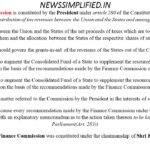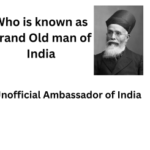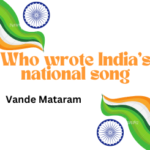New members joined BRICS: Basics Explained

Egypt, Ethiopia, Iran, Saudi Arabia, and the United Arab Emirates joined BRICS(Brazil-Russia-India-China-South Africa) as new full members; with this, the grouping has become a 10-nation body. Moscow assumed the presidency of BRICS.
In August, the top BRICS leaders at the grouping’s summit in Johannesburg approved a proposal to admit six countries, including Argentina, into the bloc with effect from January 1.
However, Argentina’s new President Javier Milei last week withdrew his country from becoming a member of the BRICS.
LEARNING FROM HOME/ WITHOUT CLASSES/ BASICS
The BRIC [Brazil, Russia, India, and China] idea was first conceived in 2001 by Goldman Sachs as part of an economic modeling exercise to forecast global economic trends over the next half-century.
BRICS is an acronym for an association of five major emerging national economies: Brazil, Russia, India, China, and South Africa.
BRIC Foreign Ministers at their meeting in New York on 21st September 2010 agreed that South Africa may be invited to join BRIC. Accordingly, South Africa was invited to attend the 3rd BRICS Summit in Sanya on 14
April 2011.
The BRICS members are all developing or newly industrialized countries, but they are distinguished by their large, fast-growing economies and significant influence on regional and global affairs; all five are G-20 members.
BRICS brings together five major emerging economies, comprising 41% of the world population, 24% of the world GDP, and 16% share in the world trade. The last summit was hosted by Russia in 2020.
The seventh summit coincided with the entry into force of constituting agreements of the New Development Bank and the BRICS Contingent Reserve Arrangement during the summit inaugural meetings of the NDB were held, and it was announced it would be lending in local currency, and opened up membership to non-BRICS countries in the coming months.
The New Development Bank (NDB), formerly referred to as the BRICS Development Bank, is a multilateral development bank operated by the BRICS states (Brazil, Russia, India, China and South Africa) as an alternative to the existing American and European-dominated World Bank and International Monetary Fund. The goal of the bank is to “mobilize resources for infrastructure and sustainable development projects in BRICS and other emerging economies and developing countries”. The bank is headquartered in Shanghai, China. Each participant country holds an equal number of shares and equal voting rights, and none of the countries will have veto power.
The BRICS Contingent Reserve Arrangement (CRA) is a framework for the provision of support through liquidity and precautionary instruments in response to actual or potential short-term balance of payments pressures. It was established in 2015 by the BRICS countries Brazil, Russia, India, China and South Africa. The objective of this reserve is to protect against global liquidity pressures. This includes currency issues where
members’ national currencies are being adversely affected by global financial pressures. The CRA is generally seen as a competitor to the International Monetary Fund (IMF) and along with the New Development Bank is viewed as an example of increasing South-South cooperation.
BRICS sees itself as representing the interests of the Global South. For India, BRICS is an important forum to seek its vision of a “multipolar” world order.







0 Comments